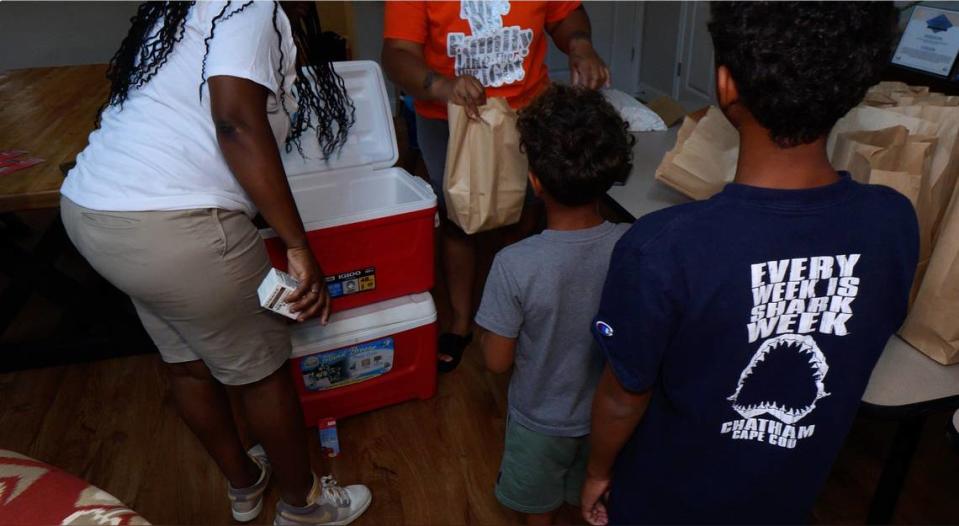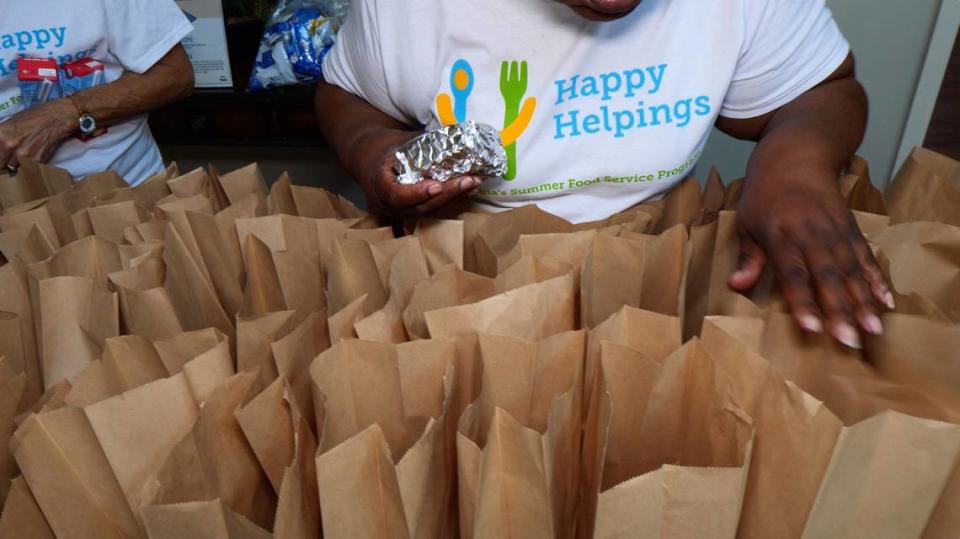Macon-Bibb’s child food insecurity rate exceeds the statewide average. Here’s how much
One-in-four children in Macon-Bibb County do not have access to adequate food, making it among the highest counties in Georgia in terms of child food insecurity.
In fact, the county’s child food insecurity rate of 24% is among the 15 highest counties in the state and nearly double the statewide average.
Food insecurity is defined as the condition of not having access to sufficient food, or food of an adequate quality, to meet one’s basic needs.
The problem locally is particularly acute when school is out — either over the summer or during long holiday breaks, according to Cindy Kicklighter, marketing and outreach manager for the Nutrition Services Division of the Georgia Department of Early Care and Learning, or DECAL.
Kicklighter’s role with DECAL is to recruit and retain local organizations to participate in Happy Helpings, Georgia’s Summer Food Service Program, and the Child and Adult Care Food Program.
However, Kicklighter explained the problem can also be found in homes before school starts, after school gets out, and on weekends.
“Children who miss school breakfast and lunch are more likely to be sick, absent or tardy, disruptive in class, and inattentive,” she said. “They also score lower on achievement tests. Good nutrition is essential for learning in school.”
Kathy R. McCollum, president and CEO of Middle Georgia Community Food Bank in Macon said her organization faces a big task.
“In our 24-county service area, it is estimated that 85,360 people are food insecure,” she said. “Of this number, 27,040 are children, meaning that one in six children face food insecurity.”
McCollum said to serve the Middle Georgia communities who need food assistance, the food bank supplies food to 200 partner agencies, including schools, churches and summer camps.
The numbers
While the state of Georgia has a child food insecurity rate of 13.3%, Macon-Bibb County has almost double that number, according to Feeding America’s most-recent statewide figures from 2021 data.
The county’s child food insecurity rate of 24% corresponds to a child food insecure population of 9,210.
Elsewhere in Middle Georgia, Peach County’s child food insecurity rate is 18%, followed by Twiggs County at 15.8%; Crawford County, 12.4%; Houston County, 10.4%; Monroe County, 9.4%, and Jones County, 9.3%.
Statewide, the highest county was Hancock located southeast of Atlanta with 35.2%. Fulton County, which includes Atlanta, had a rate of $12.5%.
Kicklighter said while it’s important to address the issue statewide, some counties are in desperate need of assistance, including Bibb County.
“While we want to ensure that any child 18 and under has access to meals and snacks throughout Georgia, there is a specific need for the counties in [Middle Georgia],” she said.

What’s being done
More than 1.1 million Georgia students rely on the nutritious meals and snacks served during the school year through the National School Breakfast and National School Lunch programs.
When school is out for the summer, Happy Helpings — Georgia’s summer food service program — helps fill the gap by providing free meals and snacks to children ages 18 and younger who might otherwise go hungry.
Meals and snacks are also available to persons with disabilities, over 18, who participate in school programs for people who are mentally or physically disabled.
Happy Helpings is administered by DECAL and federally funded through the U.S. Department of Agriculture.
Kicklighter said the program provides assistance to those who need it most.
“Happy Helpings provides an opportunity to continue a child’s physical and social development while providing nutritious meals during long vacation periods from school,” she said. “It helps children return to school ready to learn.”
Happy Helpings operates during school vacations, primarily in the summer months, from May through September. It may also provide meals during vacation breaks in schools that are operated on a year-round basis or a continuous school calendar, or during emergency school closures from October through April.
Meals offered include breakfast, lunch, supper or snack and must meet the USDA meal pattern requirements to be considered an eligible meal.

Children can get meals at a variety of locations, including school churches and summer camps.
Kicklighter said DECAL is currently recruiting public school units, charter and non-public schools, public and private non-profit organizations, government entities, faith-based organizations and camps to serve as program sponsors this summer.
“New federal regulations permit sponsors with a rural designation to apply for approval to allow meals for multiple days to be taken away from the meal site for children to enjoy throughout the week,” she said. “Sponsors receive federal reimbursement from DECAL to cover the administrative and operating costs of preparing and serving meals to eligible children at one or more meal sites.”
Those interested can go here to fill out the online form by March 15 on the Happy Helpings website.
For more information, contact the Georgia Department of Early Care and Learning.

